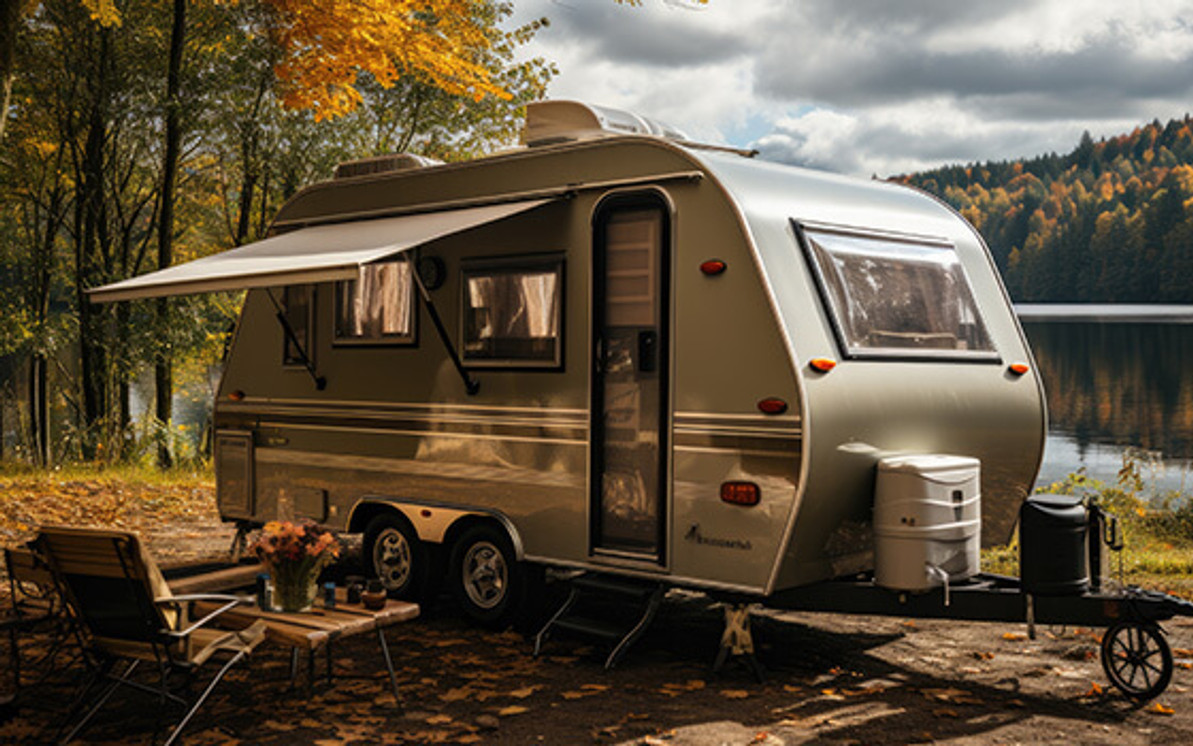Trailer Storage Tips
Storing a trailer might seem deceptively simple – just park it and forget about it, right? Well, not quite. Ensuring that your trailer remains in tip-top condition throughout its storage period is vital, especially if you want to hit the road with minimal fuss come spring. Whether you're planning to store your trailer indoors or outdoors, there are a plethora of steps you should consider taking. This comprehensive guide will explore these steps in detail, offering you a deeper understanding of how to protect your trailer investment.
Indoor Trailer Storage: The Art of Preservation
The first step in the indoor trailer storage process is to ensure that your trailer is spotlessly clean. A layer of dust and grime can accumulate on its surfaces over time, making it more challenging to remove. However, the task becomes significantly easier if you take the time to clean and, if possible, wax the trailer before storage. Waxing the trailer provides an extra layer of protection, preserving its shine and finish.
Next on your checklist should be a thorough inspection of the tires. Proper tire maintenance is crucial for indoor storage, as tires can deteriorate even when not in use. Start by checking the tire pressure. Over time, tires tend to lose pressure, so ensure they are inflated to the manufacturer's recommended levels. Additionally, assess the tread wear. Uneven tread wear can indicate alignment issues that should be addressed before storage.
When it comes to tire types, you might consider bias-ply tires for indoor storage. Bias-ply tires have tougher sidewalls, which helps maintain their shape during extended periods of inactivity. The advantage here is that bias-ply tires are generally more affordable than radials. This makes investing in a set of bias-ply winter storage tires a cost-effective choice, ensuring your trailer's tires remain in good condition throughout the storage period.
Furthermore, check all the bearings and seals. Grease all moving parts to prevent rust and corrosion. Ensure that none of the seals are dried out or leaking, as this can lead to moisture entering the bearing housing, causing damage over time.
Outdoor Trailer Storage: Protecting Against the Elements
Outdoor trailer storage presents a different set of challenges, primarily related to the elements and exposure to environmental factors. To ensure your trailer survives the rigors of outdoor storage, follow these steps:
- Clean Thoroughly: Just like with indoor storage, start by cleaning the trailer. However, outdoor storage demands even more attention in this regard. Leaving dirt and debris on the trailer's surface for an extended period can lead to paint wear and corrosion. A clean trailer is better equipped to withstand the harsh outdoor conditions.
- Tire Maintenance: The outdoor environment poses additional threats to your trailer's tires. Sunlight and moisture are tire's worst enemies when left exposed for an extended period. Check the tire pressure, and make sure the tires are covered as much as possible. Use tire covers to protect them from UV rays and the elements. Some experts also recommend removing the tires and wheels, especially if you live in a snowy region. Placing your trailer on blocks for the season and storing the tires and wheels in a dry place, such as your basement, can help extend their lifespan. Protection Against Moisture: In addition to tire covers, consider taking further steps to protect your trailer from moisture. Use a trailer cover made from breathable material to prevent condensation from forming on the surface. This breathable cover allows air to circulate, reducing the risk of rust or mold growth.
- Secure Location: When storing your trailer outdoors, select a secure location. If possible, park your trailer on a surface that drains well to avoid sitting in standing water. Avoid areas with overhanging trees, which can pose a risk of falling branches or debris. A covered storage area is the ideal choice for outdoor storage, providing additional protection from the elements.
- Inspect Regularly: Regularly check on your trailer during the storage period. Inspect for any signs of damage, especially after heavy storms or severe weather conditions. Address any issues promptly to prevent further deterioration.
- Consider Anti-Theft Measures: Outdoor storage may expose your trailer to a higher risk of theft. Consider using trailer locks and other anti-theft devices to deter potential thieves and protect your investment.
- Proper Trailer Positioning: Ensure that your trailer is positioned level and on stable ground. Proper positioning can prevent stress on the frame and suspension components during the storage period.
In conclusion, whether you opt for indoor or outdoor trailer storage, the key to preserving your investment lies in thorough maintenance and protection against the elements. While indoor storage offers a controlled environment, outdoor storage demands extra vigilance to safeguard against moisture, sunlight, and potential theft. With proper care and attention, you can ensure that when spring arrives, your trailer is ready to hit the road with minimal hassle, and your investment remains in top condition for years to come. Remember that these storage practices can significantly extend the lifespan of your trailer and ultimately save you time and money in the long run. So, take the time to store your trailer correctly, and you'll reap the rewards when it's time for your next adventure.
Recent Posts
-
Lawn and Garden Tire Information
Spring is here, which means it's time to bring out the lawn tractor and get the yard ready for warme …Mar 24th 2025 -
Snowmobile Trailer Tips
When the snow starts to fall, you may be itching to hop on your sled and hit the trails. However, be …Jan 6th 2025 -
Keep Your Golf Cart on Course - A Guide to Golf Cart Maintenance
Golf carts are a useful and convenient mode of transportation for leisure and for work …Sep 30th 2024




